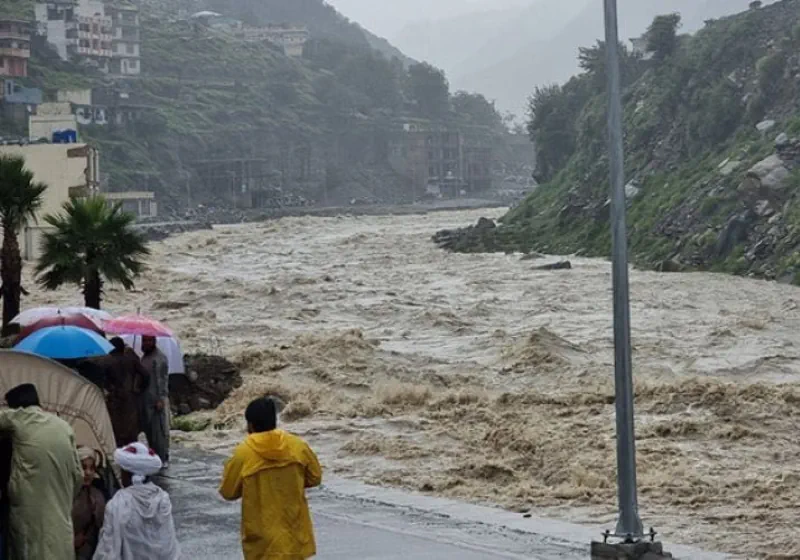Monsoon Rains and Flash Floods Claim 45 Lives Across Pakistan, NDMA Issues Fresh Warning

ISLAMABAD – As the monsoon season intensifies across Pakistan, at least 45 people have lost their lives in recent days due to heavy rains and flash floods, according to official reports released on Sunday. The devastating toll underscores the growing vulnerability of the country to extreme weather events, with more storms forecast in the coming days.
The highest number of fatalities has been recorded in Khyber Pakhtunkhwa (K-P), where 21 people—including 10 children—were killed. The Swat Valley alone accounted for 14 of these deaths, with reports indicating that flash floods swept away entire families gathered near a riverbank.
Also Read:
In Punjab, bordering India, 13 people have died since Wednesday. Among them, eight were children killed in wall or roof collapses triggered by intense rainfall, while the remaining fatalities were caused by sudden flash floods.
At least 11 additional deaths have been reported in Sindh and Balochistan, bringing the nationwide death toll to 45. The Pakistan Meteorological Department has warned that the risk of further heavy rainfall, flash floods, and landslides remains high through Saturday.
In response, the National Emergencies Operation Centre (NEOC)—a unit of the National Disaster Management Authority (NDMA)—has issued multiple weather alerts for regions expected to experience continued severe weather from June 29 to July 5.
According to NEOC, widespread rain, thunderstorms, and strong winds are forecast across various parts of the country, including Islamabad, Kashmir, northeast Punjab, the Potohar region, and upper and central areas of Khyber Pakhtunkhwa. Urban flooding is particularly likely in low-lying areas of cities such as Peshawar, Rawalpindi, and Islamabad, especially during the night hours between 9:00 PM and 4:00 AM.
Flash flooding and landslides are also anticipated in mountainous zones such as Hazara and Malakand divisions, and in the Jhelum and Poonch valleys. Moderate to low-level flooding is expected in the Swat and Kabul rivers, while glacial streams in Chitral and Hunza—such as Kunjrab and Ghujerab—pose further risk of overflow.
In southern Sindh, districts including Karachi, Hyderabad, Thatta, and Badin are likely to face heavy rains starting from July 2, increasing the likelihood of urban flooding and waterlogging in already vulnerable localities.
Authorities at the provincial and district levels have been instructed to remain on high alert, activate contingency plans, and disseminate warnings in local languages to ensure public safety. The NDMA has also urged citizens to stay informed through official advisories, avoid unnecessary travel near flood-prone areas, and prepare emergency kits.
Pakistan, home to over 240 million people, remains one of the most climate-vulnerable nations globally. The country has witnessed an uptick in extreme weather events in recent years, with this year’s monsoon season following a spring marked by destructive hailstorms and intense heatwaves.
Officials warn that with the climate crisis deepening, the frequency and severity of such disasters are likely to increase, calling for stronger preparedness and resilience-building measures across all levels of government.
Read all the Breaking News Live on pakistantimes.com and Get Latest English News & Updates from Pakistan Times. Follow us on Whatsapp channel for more.








